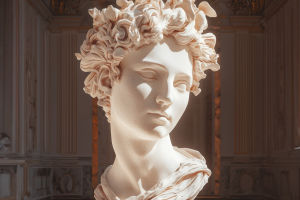Lykkers, join us on a fascinating journey through five remarkable homes that marked key moments in architectural evolution over the last century.
These spaces aren't just places to live—they are expressions of creativity, logic, and vision, where innovation met daily life in surprising ways.
Haus Wittgenstein, Vienna (Austria) – 1925–28
A Philosopher’s Approach to Design
Built by Ludwig Wittgenstein in collaboration with Paul Engelmann, this residence in Vienna is a striking example of logical rigor translated into architecture.
Every detail—down to the position of a window or the type of hinge—was carefully considered and refined. The outcome is a house where geometric clarity and functionality define the overall aesthetic.
Timeless Simplicity
The structure reflects a deep sense of proportion and balance. Spaces are stripped to their essence, resulting in an environment that is both serene and intellectually engaging. It’s a physical extension of a philosophical mindset. Today, the home is recognized for its contribution to minimalist design and is estimated to hold a market value in the range of €10–15 million.
Maison en Bord de Mer, Roquebrune-Cap-Martin (France) – 1927–29
The Vision of Eileen Gray
This house on the French Riviera is one of only two ever built by designer Eileen Gray. Named E-1027, it was created as a personal retreat and stands as an embodiment of early modern living. It is compact yet richly functional, integrating custom furniture and clever spatial planning.
Integrated Innovation
Every feature—down to the shelving, lighting, and ventilation—was designed with both purpose and elegance in mind. Located near the coast, the house is a jewel of streamlined form and remains a preserved landmark in contemporary architectural history. Its value today exceeds €20 million, both for its design and unique legacy.
Novocomum, Como (Italy) – 1928–29
A New Style Emerges
Designed by Giuseppe Terragni, Novocomum introduced a radical break from traditional Italian housing at the time. Its crisp, clean lines and thoughtful organization of space became a blueprint for a new way of building.
Functional Beauty
Inside, apartments are filled with natural light and connected to the surrounding environment. The design emphasizes practical living while embracing new materials and construction methods. The building, still occupied today, represents a pivotal step in the development of 20th-century architecture and is valued at around €8–10 million.
Apartment Houses by Asnago and Vender, Milan (Italy) – 1934–36
Urban Clarity and Purpose
These multi-level homes in Milan showcase a pure, no-nonsense design language. Created by architects Asnago and Vender, the buildings express the ideals of efficiency and transparency. Forms are simple but refined, with every detail serving a purpose.
Social Living, Reimagined
While the units are self-contained, there’s a focus on shared terraces, rooftop spaces, and balconies that promote interaction and well-being. The result is a balanced blend of personal privacy and communal life. These homes now carry an estimated market value of €6–9 million depending on location and preservation.
Villa Figini, Milan (Italy) – 1933–35
Modern Ideals Realized
Architect Luigi Figini’s own house in Milan is a direct homage to Le Corbusier’s principles. Suspended on thin columns and featuring wide horizontal windows, the house presents a vision of lightness and openness.
It rises like a sculptural piece from the urban landscape of Villaggio dei Giornalisti.
Designed for Harmony
The home includes terraces, open courtyards, and green rooftops that integrate nature into daily life. Its bold lines and thoughtful use of space make it an enduring icon of progressive architecture. Market value is estimated at around €4–7 million.
Conclusion: Timeless Homes, Lasting Influence
These five houses are more than buildings—they are landmarks of thought and design. Each one reflects a unique vision that has helped redefine how spaces are conceived and lived in.
From intellectual experiments to urban innovations, they stand as timeless references for anyone passionate about architecture. Lykkers, let these homes inspire you to see the spaces around you not just as shelter, but as powerful expressions of creativity and purpose.


